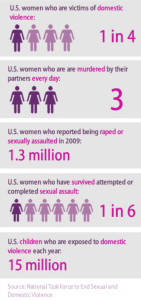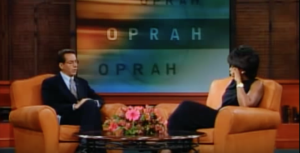This week I will be reviewing The Gift of Fear by Gavin de Becker.
Out of all the books I’ve read in my life, this one has impacted me the most and definitely changed the way I travel through the world. I read it for the first time about a year ago during my senior year of high school and I re-read it over this past winter break.
Gavin de Becker is an expert on the prediction and management of violence. He designed the mosaic threat assessment systems used to screen threats to Justices of the Supreme Court of the United States. He was appointed twice to the President’s Advisory Board at the United States Department of Justice. He also served two terms on the Governor’s Advisory Board at the California Department of Mental Health.  He currently runs a personal security firm with a wide array of clients from battered women’s shelters to celebrities. His long list of impressive accomplishments makes him the perfect person to discuss the important issue of safety and prevention of violence.
He currently runs a personal security firm with a wide array of clients from battered women’s shelters to celebrities. His long list of impressive accomplishments makes him the perfect person to discuss the important issue of safety and prevention of violence.
“He had probably been watching her for a while.”
From the very first line, de Becker grabs your attention and holds onto it. Full of facts, case histories, statistics, and advice, it still reads like a thrilling novel. The Gift of fear breaks down violent situations into a step-by-step guide from, both an outside, expert perspective, and the surviving victims perspective. Each hour seventy-five women are raped in the United States, every few seconds a woman is beaten, and each day four hundred Americans suffer shooting injuries. Often times attackers, stalkers, and physical violence is framed as unpredictable. De Becker challenges the myth that most violent acts are random and shows that they usually have discernible motives and are preceded by clear warning signs. Underlying all of the stories, statistics, and expertise is the notion that humans have a more sophisticated violence detection system that most people realize. He attempts to bring awareness to this intuition, so that more people listen to it.
De Becker notes that victims of violence usually feel a sense of fear before any threat or violence takes place. They may distrust or ignore the fear, or they might take action to save themselves from harm. It’s that feeling that something just isn’t quite right for no consciously apparent reason. These survival signals are often ignored. This book is about the prediction of violence-the things mostly women can do to avoid being the victims of assaults and rapes and beatings. But not in an offensive way telling women how to dress, but how women can be smarter about what they notice and how to react to them. In a similar manner, Louis CK satirically notes the danger women face in daily life. The book teaches how to identify the warning signals of a potential attacker and recommends strategies for dealing with the problem before it becomes life threatening. The case studies are gripping and suspenseful, and include tactics for dealing with similar situations. Each chapter involves different situations, stranger violence, domestic violence, stalking, workplace violence, and school violence. This information is of vital importance because it could save lives.
This information is of vital importance because it could save lives.
His first example tells the story of Kelly, who was brutally assaulted and raped and whose intuition saved her life. Kelly recounts to de Becker how a charismatic man charmed his way into her apartment under the pretense of helping her with her groceries. From the moment she heard his voice, she knew something sounded wrong, but she pushed away her fears and even, “felt guilty about her suspicion.” Each time she said ‘no, she didn’t need help,’ he pushed until she said yes each time. Eventually they entered her apartment and he had all the power. After the rape, he left the room saying, “I promise I’m not going to hurt you.” While he was in the kitchen, she snuck out of her room and across the hall to her neighbor’s. While discussing her ordeal with de Becker she mentions, “I knew that if I stayed in my room, he was going to come back from the kitchen and kill me, but I don’t know how I was so certain.” Going back in her memory through the event she pinpoints each exact moment that caused her to flee her apartment at that moment. She listened to her gut and it saved her life.  De Becker further explains this specific example on Oprah.
De Becker further explains this specific example on Oprah.
De Becker gives real examples of the patterns in action, thought, and belief of criminals and he explains why they are successful.
He outlines several pre-incident indicators that when properly identified, can help avoid violence.
Forced teaming. When a person implies that he has something in common with the victim when it isn’t really true. This occurs when he speaks in “we” terms to force a false sense of trust.
Too many details. A lie usually includes an excessive amount of details to make themselves sound more credible to the victim.
Loan sharking. Unsolicited help to the victim so that they feel obliged to reciprocate a gesture.
Unsolicited promise. A promise to do or not do something when no promise has been asked for. This most likely means that the promise will be broken.
Discounting the word no. Refusing to accept rejection even for the tiniest reason.
Charm and niceness. De Becker says it best himself.
“We must learn and then teach our children that niceness does not equal goodness. Niceness is a decision, a strategy of social interaction; it is not a character trait. People seeking to control others almost always present the image of a nice person in the beginning. Niceness often always has a discoverable motive.” Niceness is a form of manipulation.
De Becker highlights these pre-incident indicators to recognize them when they happen in your own life.
“Trust that what causes alarm probably should, because when it comes to danger, intuition is always right in at least two important ways. 1. It is always in response to something. 2. It always has your best interest at heart.”
Learning to predict and recognize violence is the best step in preventing it. This book could save your life.
